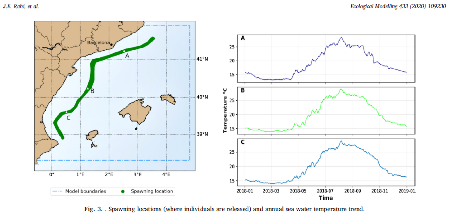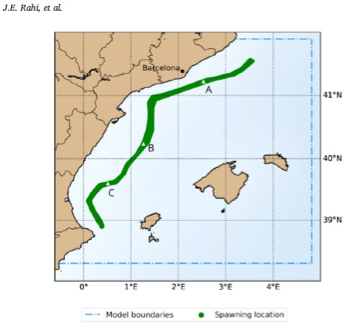EU-funded ODYSSEA project partners recently published academic articles on cutting-edge use of social media and individual-based modelling for tracking and forecasting spread of invasive species.
“Invasive species, such as jellyfish, cause economic losses in millions annually. Therefore, being able to accurately monitor and predict jellyfish is vital to several stakeholders (e.g. tourism, fishery, government),” explained the first team, headed by Claire Laudy of Thales. “A potential tool to help these communities could be by combining a biophysical drift model with a processing chain for soft information fusion which would predict jellyfish occurrences,” they suggested.

Citing the importance of validating invasive species projections with actual data to guarantee accuracy, the team noted that “this data can be gathered from citizens who reported jellyfish sightings on social media or a dedicated citizen science mobile app. As the information provided by citizens is spread among numerous atomic reports, we use a platform for soft information fusion to aggregate and fuse these reports into a single information network.”
“The information network can then be queried to extract relevant features to validate the jellyfish drift model,” the team explained.
The team, including Lőrinc Mészáros and Sonja Wanke of Deltares and Mercedes de Juan of Fundación Valenciaport, published the innovative method in July in the FUSION2020 conference paper, in an article titled “Mixing social media analysis and physical models to monitor invasive species”. The article noted the ODYSSEA project and “the societal impacts of jellyfish blooms on different sectors of the economy” as the context of research.

Future work on the use of social media reporting includes initialising the model with soft information, as well as instrumentalising the different quality levels of the reports provided by citizens, in order to assess the quality of the merged information pool, the team said.
At the same time, a second ODYSSEA team, composed of Joe El Rahi, of Deltares and Ghent University’s Department of Civil Engineering, together with Marc P. Weeber and Ghada El Serafy, both of Deltares, published a paper on “Modelling the effect of behavior on the distribution of the jellyfish Mauve Stinger (Pelagianoctiluca) in the Balearic Sea using an individual-based model”, in the October 2020 issue of Ecological Modelling, available online last month.
The behaviour and physiology of jellyfish influence their spatial distribution and swarming patterns, but current models barely integrate such factors into their projections of distribution and swarming, the team noted in the article. The authors therefore sought to simulate the life cycle and movement of one species of jellyfish, the mauve stinger, from the fertilised egg until the adult stage, using an individual-based model (IBM).
“Our model combines available knowledge on the mauve stinger with inputs of ocean currents and temperature from the CMEMS hydrodynamic model,” they explained. “Particle agents are released along the submarine canyons in the Spanish Mediterranean waters during the spring reproduction period, to later disperse and develop through an interplay between physical and biological processes.”
“When compared with a simpler model, that omits behavior and physiology, the biophysical model is able to qualitatively better predict stranding events in the Balearic Sea,” the team concluded.
“Our results expose the potential for operational life stage and distribution modelling of jellyfish.”

